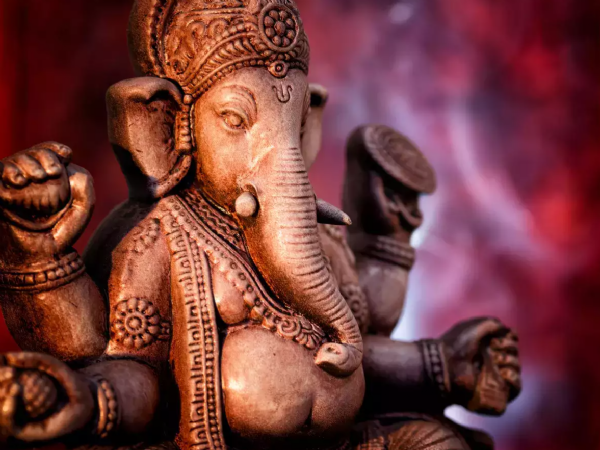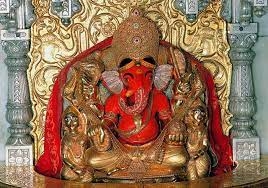Know why Ganapati with the right Sided trunk is not worshipped at home
19 Sep 2023 08:25:57
It’s Bhagwan Ganesha’s festival and everyone is busy with his worship. Each year, for 10 days, we bring our beloved Bhagwan Ganesha home and he becomes a part of our household. The devotees worship Bhagwan Ganesha for wisdom, prosperity and fortune and to seek blessings for their families.

The celebrations begin by booking the right murti for your home. While one might marvel at the beautifully crafted Ganesha idols, one must pay careful attention to the connection you feel with the Ganpati. Have you ever wondered what is the logic or purpose behind that
Bhagwan Ganesha uses his trunk to destroy obstacles and progress. His trunk symbolises change. The difference between right-trunked and left-trunked Ganesha idols lies primarily in their symbolism and the qualities associated with them. Here's a summary of the key differences:
If one observes many idols, there are three directions in which lords trunk curls – left, straight, and right. Each has its significance and is associated with a feature specific to advancement in life. Normally Ganesha trunk will be almost straight and then in the end portion, it will turn left or right or on rare occasions will be straight. So if the trunk is turning to the left side in the beginning then it is left-sided Ganesha statue and if the trunk is turning to the right side in the beginning then it is right sided Ganesha Statue. It does not matter if the trunk turns to any other side in the end.
Left-Trunked Ganesha (Vakratunda):
Symbolism: The left-trunked Ganesha, known as "Vamamukhi," is widely associated with the removal of obstacles, success, knowledge, and prosperity. The left side of BhagwanGanesha is believed to be aligned with and possess the qualities of the Moon, which makes that side peaceful and blissful.
_202309182129338107_H@@IGHT_183_W@@IDTH_275.jpg)
Direction: In this form, Ganesha's trunk curves to the left side.
It’s believed that Ganesha idols with trunk turning to left side is generally calm because, it’s the direction of moon channel (Ida Nadi) – the spiritual energy channel corresponding to soothing energy flow. This channel caters to left sympathetic nervous system that looks after one’s emotional life.
Right-Trunked Ganesha (Siddhi Vinayaka):
Symbolism: The right-trunked Ganesha, known as "Siddhi Vinayaka," is associated with a stricter and more disciplined aspect of Ganesha.

Direction: In this form, Ganesha's trunk curves to the right side.
The right trunk Ganesh idols are worshipped fervently and religiously. The Ganesh idol at the famous Siddhivinayak Temple in Mumbai is an idol with its trunk curved to the right. The right sided idol also signifies the Pingala Nadi or the energy of the sun. Just like the sun can create as well as destroy, this Ganpati can bring you happiness if worshipped the correct way or destruction if uncared for.
the right trunked ganesha is a dakshin abimukhi ganesha (facing southern direction) and in Hindu religion, everything towards south is bad luck. As indicated by religious texts, this is the direction of BhagwanYama, the god accountable for death and suffering.
In contrast, worshipping the Ganesha idol with the right side trunk has strict rules and regulations, which, if not appropriately followed, will result in harsh consequences. Right trunk Ganesha idols are usually worshipped in temples where pujaris follow proper rules and regulations to worship BhagwanGanesha.
Straight Trunk
The rarest of the three is finding Ganesha idol with a straight trunk. The straight trunk represents the Sushumna Nadi, which runs along the spinal cord. Thus, bringing home Ganesha with a straight trunk signifies one is in a balanced state emotionally and physically, having achieved the divine state devoid of worldly pleasures. Bring home Ganesha with a straight trunk if you are worried about the mental health of your family.
Ultimately, the choice between left-trunked and right-trunked Ganesha idols is a matter of personal belief, tradition, and cultural preference. Both forms of Ganesha are revered and considered sacred, and people select the one that aligns with their spiritual goals and aspirations.